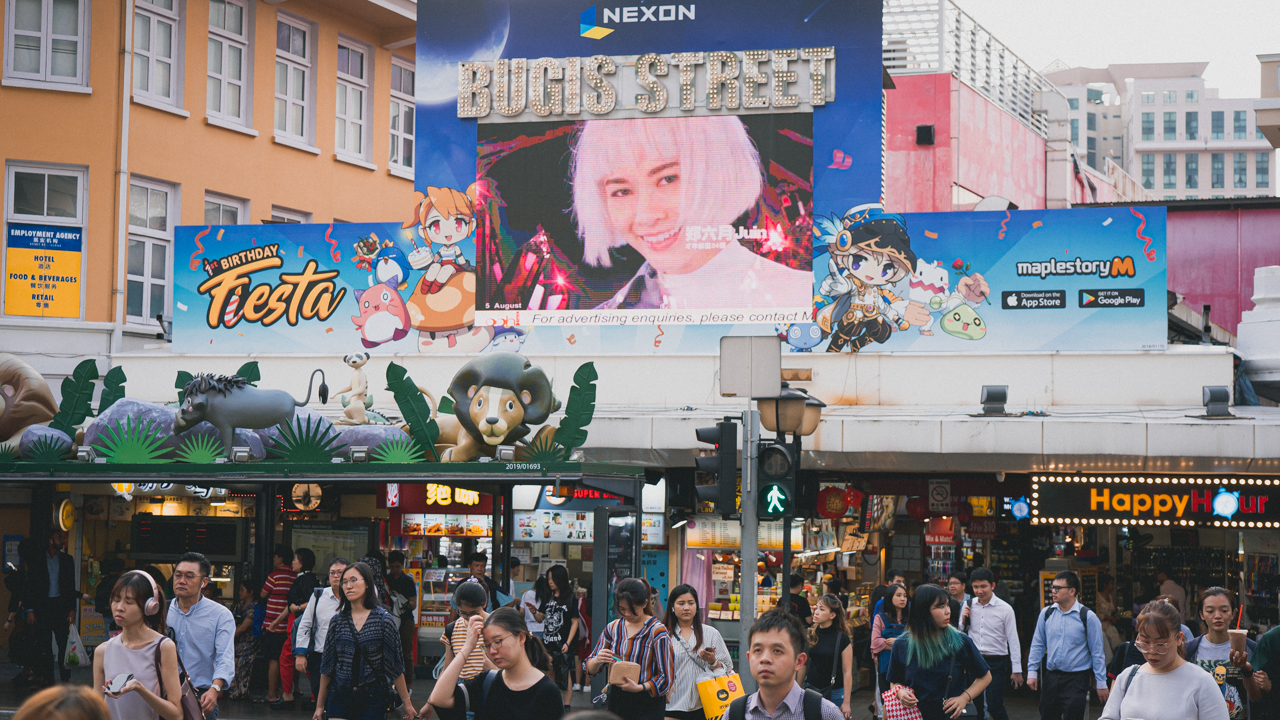Being a teenager was one of the toughest times in my life. As soon as puberty hit, everything changed.
Almost overnight, my voice began to warble awkwardly and cracked on a whim; pimples became my new best friend; and hair started sprouting in places the sun didn’t shine. It was a lot, and the worst part was that the changes weren’t just physical.
I started thinking more abstractly, outside of myself; about how I thought others saw me. This naturally meant majority of my teenage years were spent worrying about how to fit in. I wanted nothing more than to be liked by my peers, prepared to do almost anything to be accepted.
And so I went about this the only way I knew how: through fashion. If I changed how I dressed, I could influence what friends or strangers thought of me. In my head, if I looked cool, I’d be cool, no matter who I was inside—something that at that age, I hadn’t figured out yet.
But what no one tells you about being a teenager is that most of the time, you’re pretty broke. As much as I longed to swap the Doraemon tees my mom bought from pasar malams for something cooler that didn’t scream I was still a little kid, I couldn’t.
My allowance limited my spending power, and I simply couldn’t afford the clothes I wanted from my neighbourhood mall or Far East Plaza. Back in those days, wallet-friendly stores like Uniqlo and H&M didn’t exist.
There was only one place a poor teenager like myself could go to explore fashion: Bugis Street.
In other words, it was the birthplace of my identity.

No matter when it was or who I was with, there was always joy in wandering down Bugis Street’s many meandering alleys—each an adventure in itself—taking in everything the place had to offer. And I knew it all by heart.
There were the cramped walkways, made narrower by racks of clothes and accessories that spilled out of the small shops. Techno remixes of radio hits circa the early-2000s (i.e Aqua’s ‘Doctor Jones’) never failed to blast from a speaker I could never find. In the mall’s dimmer corners, neon signs bathed the walls in a riot of colour.
Bugis Street was filled with so much life and character I just couldn’t find at my sterile neighbourhood mall.
Today, everything seems to be just as I had left it. The ever-popular fruit juice stand is still on the same corner, a small crowd gathered in front of the rows of multi-coloured cups dripping with condensation. Likewise, the hand-written ‘3 for $10’ signs dot the same spots on the horizon. Walking down the street, I’m amazed to find that the Heineken beer singlet stowed in the depths of my closet can still be bought.
But as recognisable as everything is, this isn’t quite the place I used to know.
Tuning the white noise out, snippets of overheard conversations suddenly become clear. And I realise: nothing I hear sounds typically Singaporean.
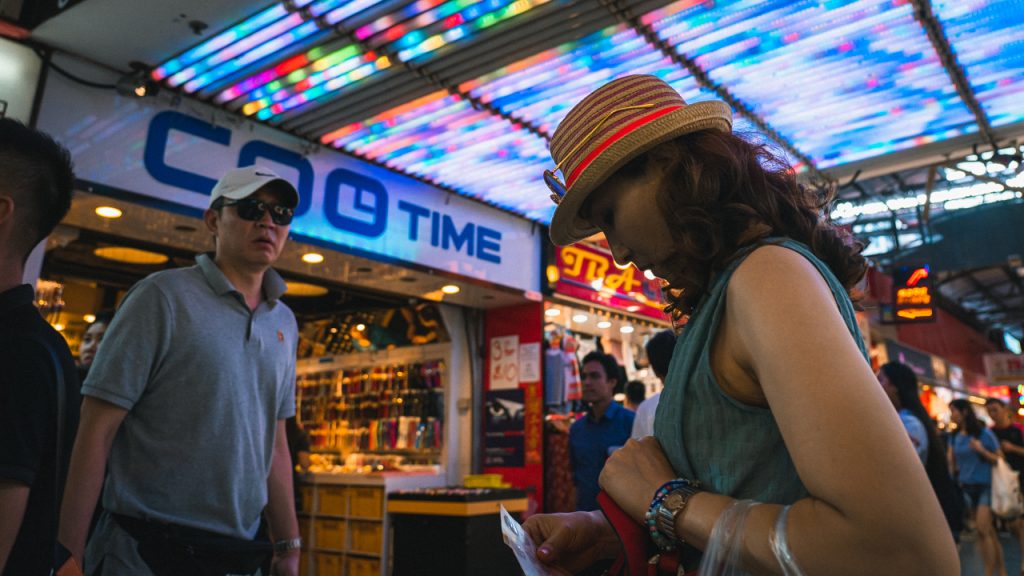
I am, in fact, completely surrounded by tourists—something that’s never happened in all the time I spent here. Back in the day, Singaporean teenagers made up the bulk of Bugis Street’s visitors, and spotting this many foreigners could only mean a tour bus had broken down in the vicinity.
These days, the stall owners know who actually spends money here.
Dozens of souvenir shops selling everything from Merlion keychains to ‘I <3 SG’ t-shirts have popped up, together with those hawking tote bags emblazoned with Singaporean landmarks. Stacks of postcards with the Singaporean skyline printed on them are everywhere I look. Hell, even the old food vendors seem to be targeting tourists.
Unlike conventional pasar malam fare (think grilled chicken wings, fish balls, and fried squid), the snacks sold in Bugis Street now closely resemble street food offerings from other parts of the world, albeit with a local twist. Recognisable enough to someone far from home, yet unique enough to warrant a try.
Take the egg waffle. Commonly found on the streets of Hong Kong, the Bugis Street version is filled with kaya, its appeal stemming from its familiar appearance rather than a promise of a wonderful new flavour. Similarly, the American corndog has also been transformed into a piece of prata instead of fried batter encasing the hot dog within.
They’re delicious, yet they leave a bad taste in my mouth.
While I understand stall owners have to adapt to the times to survive, the irrational part of me wishes these familiar stall owners had just retired without compromising—leaving a new generation of vendors to cater to foreign tastes—instead of becoming nearly unrecognisable.
But I also realise why I’m disappointed. It’s not so much about how the people here have changed. After all, Bugis Street is but a mirror, and this is about me.
Some time not long ago, I too changed. Always wanting to learn to play the piano, I opted instead for guitar lessons simply because friends gushed about how cool the instrument was. Rather than tell my friends I found World of Warcraft lame, I picked up the game just because they wanted to play it.
Wanting to fit in, I hid the person I was in favour of becoming someone that would please the people around me. I hadn’t yet learnt how to be unapologetic about who I was. Coupled with my fear of rejection, this made the man in the mirror difficult to recognise at times.
Epiphany over, I dash up one of the many random stairwells in search of the side of this place I love.
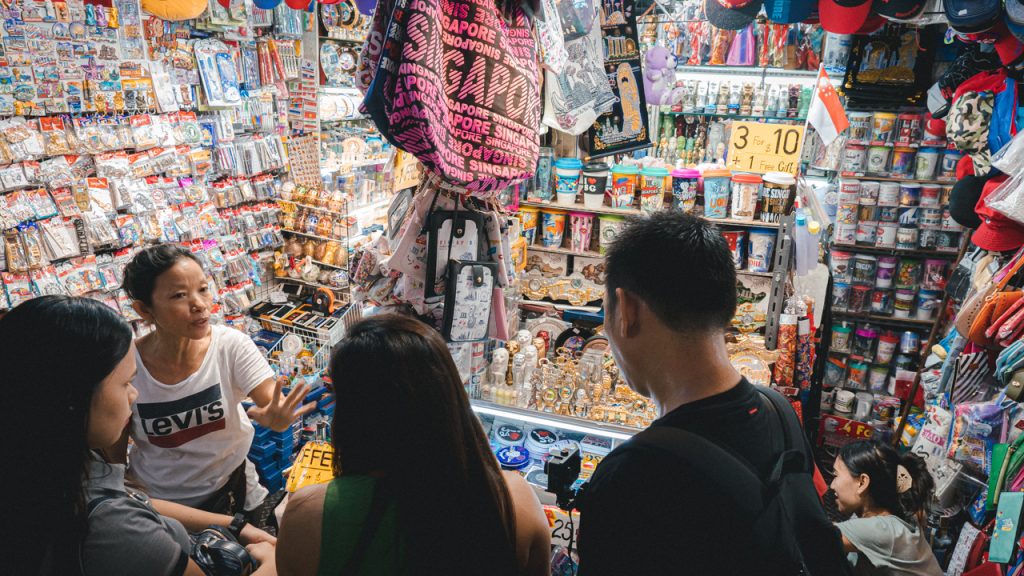
In contrast to the massive crowd earlier, the second floor is much quieter. Here, tourists are far and few between, replaced by either small groups of students—who look to be discovering this place for the first time—or regular Singaporeans bargain-hunting.
Suddenly, I’m a bright-eyed 15-year-old again, figuring out what I liked and what I didn’t.
Loud tees with dragons or other Chinese motifs were a strict no-no because I didn’t want to project an image of beng-ness. Similarly, I avoided dangly earrings because I found them too feminine. Anything in black was always good, partly because I liked the ‘emo’ look and it was easy to match—something I learnt watching other visitors to Bugis Street.
Without realising it, I was working out who I was and who I wanted to be.
Feet automatically tracing the path I’d walked many times before, I find bejewelled phone cases still shimmering under the same fluorescent lighting. Bags that look eerily similar to those of up-market brands (but go by a different name and for a fraction of the price) still hang from steel poles along the ceiling. The mannequins are still dressed in cardigans, with dog tags hanging around their necks—reminiscent of fashion trends that are long past their heyday, appealing to a demographic I’m not even sure exists anymore.
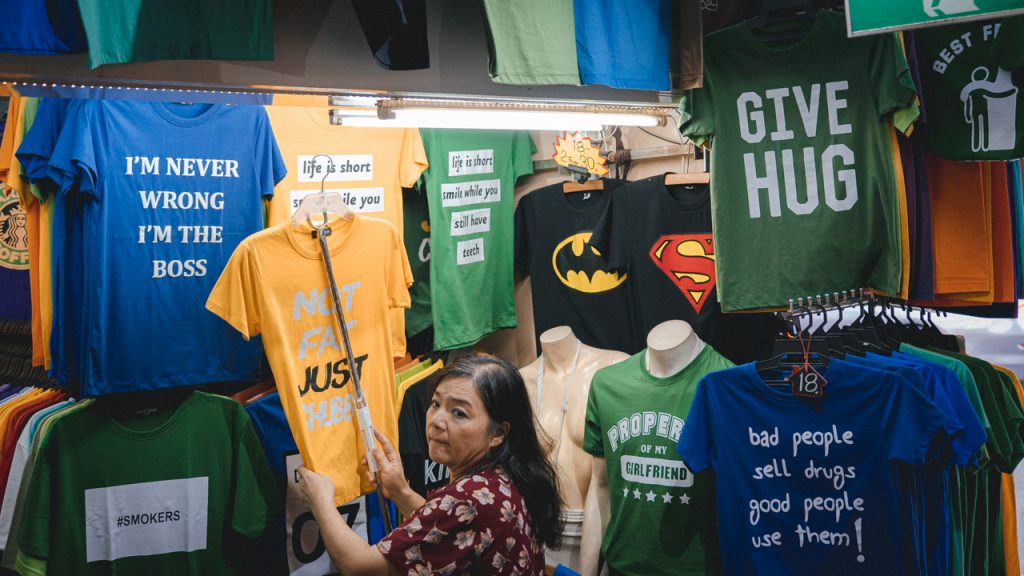
Unlike the neighbourhood mall that’s perpetually being revamped, or the malls that are designed to attract more affluent shoppers (ahem, Paragon, Marina Bay Sands) there is no struggle for relevance or superiority here.
This is Singaporean consumerism stripped down to its most basic.
It is perfectly imperfect. All along the walls that enclose the maze of laneways, I spot large chunks of paint peeling off, alongside bundles of exposed electrical cables. Unsightly aluminium stepladders lean against them, proudly standing their ground instead of being tucked away and hidden from sight. There is no frosted glass or polished wood to be found, only metal and neon.
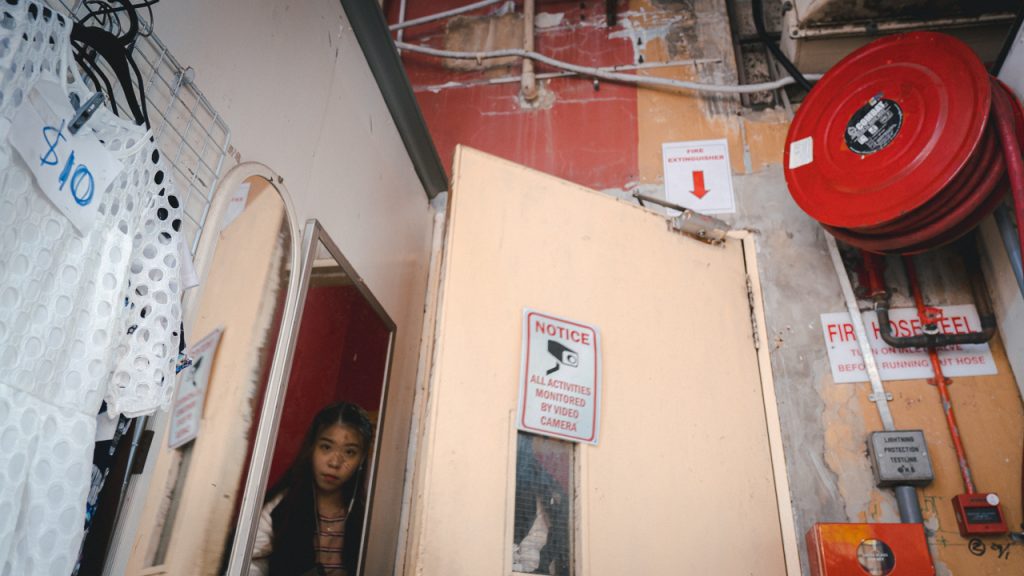
And it’s not cool simply because it’s different from the modern mall of today. It’s cool because this is what those malls used to look like ages ago. And somehow, it still exists today, a time capsule you can revisit to recall what you were like back then.
Of course, this isn’t to say management hasn’t tried to keep the mall in tune with the times. There are claw machines and shiny new vending machines— a handful of additions to paradise, but hardly enough to alter the character of the place.
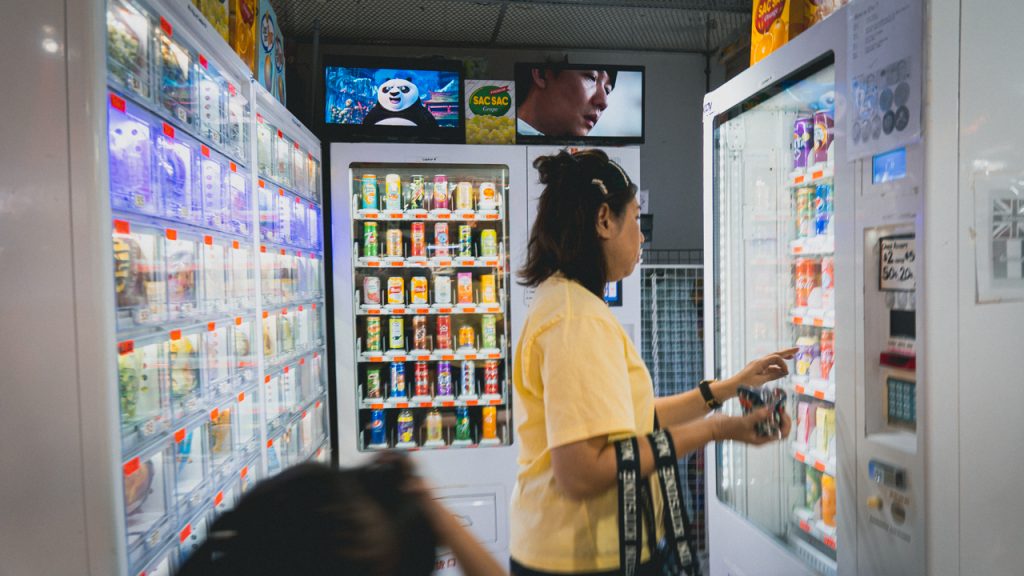

Turning the corner, I encounter groups of young ladies—some wearing aprons over their clothes and others in the midst of removing their surgical masks, all chatting excitedly as they prepare for a late lunch.

In short, Bugis Street has adapted to the times. But truly changed? Nah.
And yet, I have.

Just like me, it had been years since they had last been here, and I saw the wonder on their faces. Some said it was like stepping back in time, to one of the few places in Singapore that’s been left (largely) untouched by technology and westernisation. Others marvelled at how they felt as if they were in another part of Southeast Asia, leaving the country without needing a passport.
They might be right—but they’ve all missed the point. Going back to Bugis Street isn’t just about revisiting a place you used to know. It’s about revisiting a younger version of yourself. Because of how unchanged the mall is, you don’t struggle to remember anything. The memories might be buried deep in your subconsciousness, but they’re there. They’re still as powerful.
People often criticise Singaporeans for being overly nostalgic. Here, nostalgia makes perfect sense. It is necessary for appreciating what Bugis Street truly has to offer. Going back is not about exploring the place with fresh eyes. That isn’t the point.
Instead, it’s about letting your teenage self take over, but this time, blessed with the perspective time has given you.
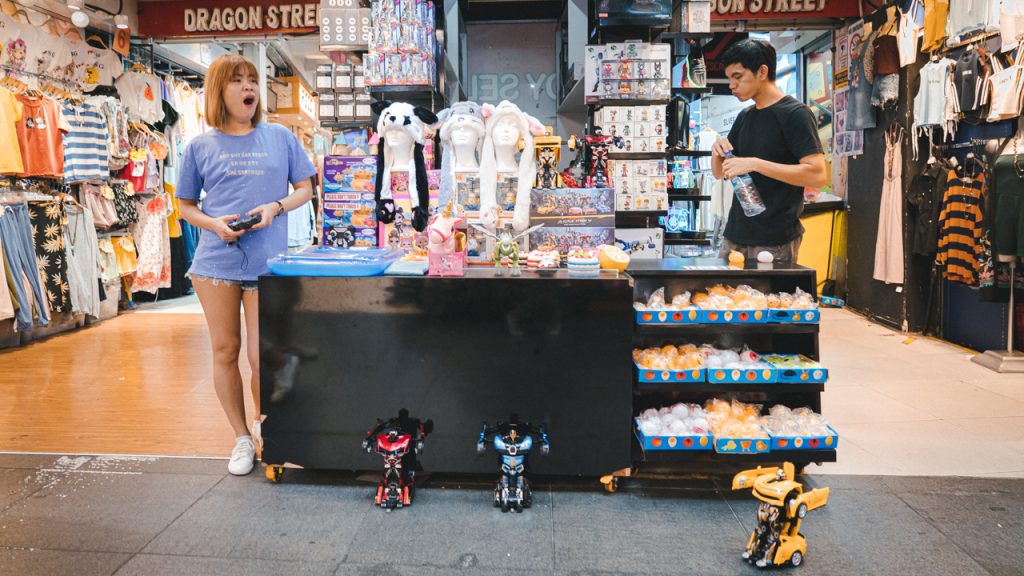
As every other mall in Singapore takes it in turn to morph into the next Jewel or Funan, the contrast between the mall of the future and past will only become greater, strengthening the novelty and appeal of Bugis Street.
But why wait? Go now.
Go for the good food. Go because you want to feel like you’re in another country. Go because you want to encounter a different kind of retail experience. Go because it’s a place that’s managed to stay stuck in time.
Most importantly, go to remind yourself of a time when you were a little rough around the edges—raw and just trying to figure out who you were and wanted to be.
As mentioned earlier, the place is a window—and a mirror—to yourself.
Perhaps it’s time to take a long, hard look. At least one more time.

